
www.petsafe.net | Customer Care Center 1-800-732-2677 8
TRAINING GUIDE
Stimulation Methods
The PetSafe
®
SMART DOG
®
Trainer has 1 tone, 1 vibration and 15 static stimulation levels. This allows you to choose the
stimulation level that is best for your pet.
Each dog has a different temperament, and some forms of stimulation work better than others. With 3 stimulation types to choose
from on the SMART DOG Trainer, you can find the most effective way to get your dog’s attention.
Tone (Beep)
The SMART DOG Trainer tone volume is non-adjustable. Tone can be used as a warning before vibration or static stimulation to
stop unwanted behaviors. Once your dog associates the tone with the vibration or static stimulation, they have the opportunity
to choose between continuing the behavior or complying with your command. In time you will likely only need to use the tone.
Alternatively, you could use the tone to mark positive behaviors. But you should absolutely never use tone for both. See more in
Marking Positive Behaviors with Tone.
Vibration
The SMART DOG Trainer has one non-adjustable level of vibration stimulation. When you push the vibration button, the
probes on the training collar will vibrate to interrupt the dog’s behavior. This interruption can be used alone or just before static
stimulation, giving your dog the opportunity to choose to comply with your command before a static correction.
Static
The SMART DOG Trainer has 15 levels of static stimulation. This interruption type can be used alone or in combination with tone
or vibration. A safe pulse of static stimulation is delivered through two contact points on the training collar. Pets experience a light
tingling sensation that interrupts their behavior. Please see Find the Best Stimulation Level for Your Pet for very important information.
Dog Training Recommendations
When Training Begins: Training starts the moment you bring your puppy home. While your dog will not be ready for the
PetSafe
®
products until 6 months of age, you should begin basic training immediately.
Introducing the Remote Trainer: Introduce your SMART DOG training collar when your dog understands basic
obedience commands and is over 6 months of age.
Stopping Unwanted Behavior: The level of stimulation should be enough to interrupt your dog and give you the ability to
redirect your dog’s attention to another behavior. The behavior you redirect them to should be “incompatible” with the unwanted
behavior. For instance, if training a dog not to jump, having them sit instead is incompatible and will keep them from jumping.
One Command at a Time: Focus on teaching one command at a time.
NOTE: Using praise or treats immediately after the correct response is great for encouraging your dog to repeat the desired
behavior. This can help strengthen the communication between you and your dog.
Collar Conditioning: You don’t want your dog to only associate wearing the training collar with being corrected. While
your dog is wearing the collar, make sure to spend ample time playing and letting your dog be a dog. Take the same care in not
causing your dog to associate your smartphone with being stimulated. That means that they should see your phone, not just when
being stimulated, but at other times. For most people, this shouldn’t be a problem.
NOTE: If your pet reacts to the training tone by hiding or acting fearful, redirect his attention to a simple and appropriate
behavior, such as The Sit Command. Other pets in hearing range will be affected by the training tones. Therefore, training
sessions should be conducted out of hearing range of other pets.

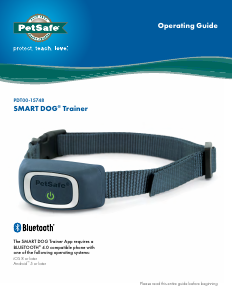


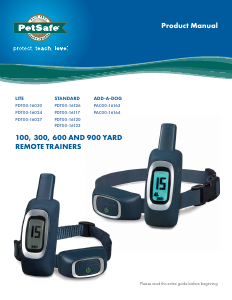
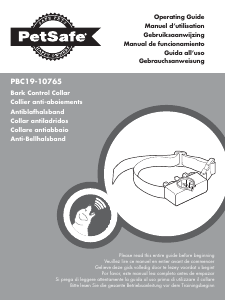
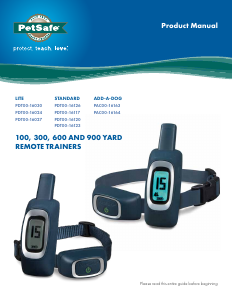
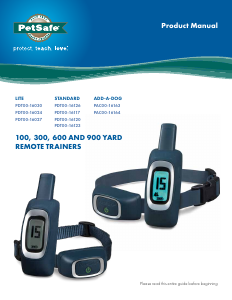

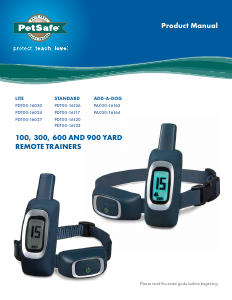
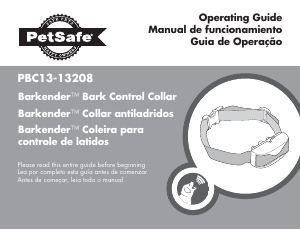
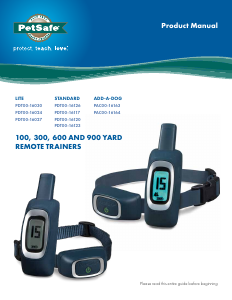
Praat mee over dit product
Laat hier weten wat jij vindt van de PetSafe PDT00-15748 Smart Dog Elektronische halsband. Als je een vraag hebt, lees dan eerst zorgvuldig de handleiding door. Een handleiding aanvragen kan via ons contactformulier.